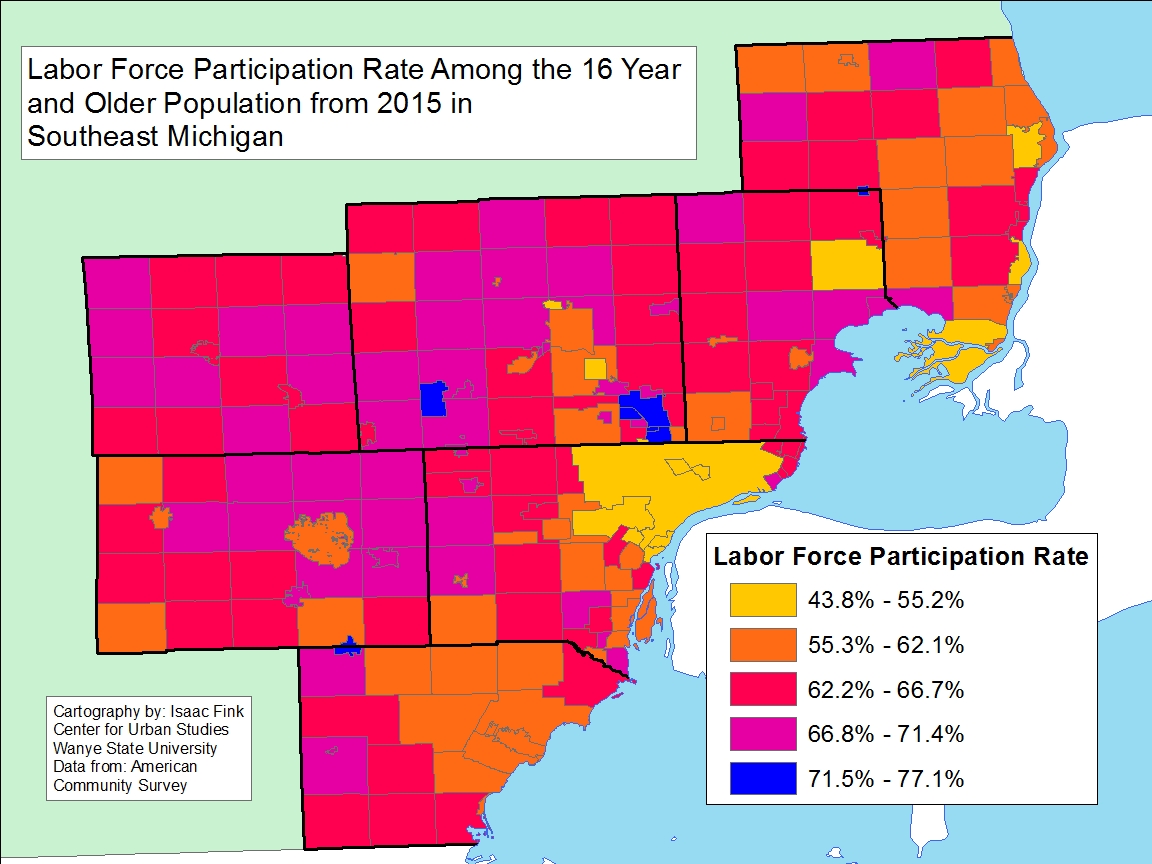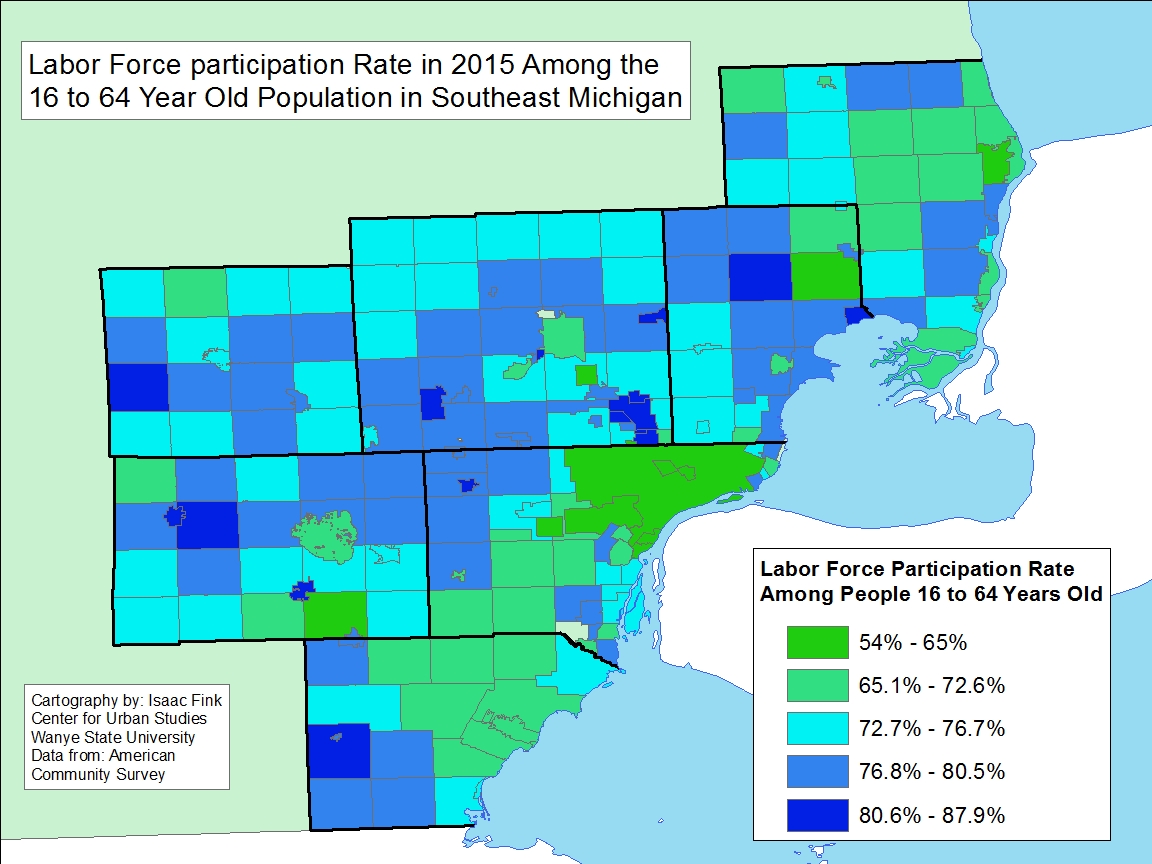In 2015 the Labor Force participation rate throughout Southeastern Michigan was the lowest in Highland Park (at 58%) for those 16 and above[1] , according to the American Community Survey. For reference, the rate average rate nationally was 62.4% in September 2015. By August 2017, it was 62.9.
As the maps below show, both high and low labor force participation is generally concentrated on the two sides of Eight Mile Road, just across county borders–low in northern Wayne County in the Detroit and Highland Park area, high in southern Oakland County in the Ferndale area.
An individual is considered part of the labor force if they have a job or are actively seeking one. The labor force participation rate is the percentage of adults who are members of the labor force.

[1] 16 and above refers to all ages including those above 64.
For those 16 and older the City of Highland Park had the lowest labor force participation rate in the region at 58 percent for those 16 and older and 54 percent for those between the ages of 16-64. In the City of Detroit the labor for participation for those 16 and older was 63 percent; it was 53 percent for those between the ages of 16 and 64. While there was a pocket of Wayne County where the labor force participation rate wasn’t above 55.2 percent for those 16 and older and above 65 percent for those between 16 and 64, the majority of the region had labor force participation rates between 62.2 percent and 71.4 percent for those aged 16 and older and between 72.7 percent and 80.5 percent for those between the ages of 16 and 64. Just as there was a concentration of low labor force participation in Wayne County in and around Detroit, there was a concentration of the highest labor force participation markets in southern Oakland County in the Ferndale/Royal Oak area. In Royal Oak the labor force participation rate was 74.8 percent for those 16 and older and 86.2 percent for those between the ages of 18 and 64. Ferndale had the highest labor force participation rate at for those between ages of 16-64 at 87.9 percent, and for those 16 and older and it was 73.2 percent.
An understanding of the labor force participation rate is important as it is another strong indicator of the economy. Those classified as unemployed may not be active participants of the workforce for a variety of reasons, one of which includes becoming discouraged and stopping seeking employment.
Next week we will look at how the labor force participation rate has changed between 2010 and 2015 and also examine how it correlates to the region’s poverty rates.
